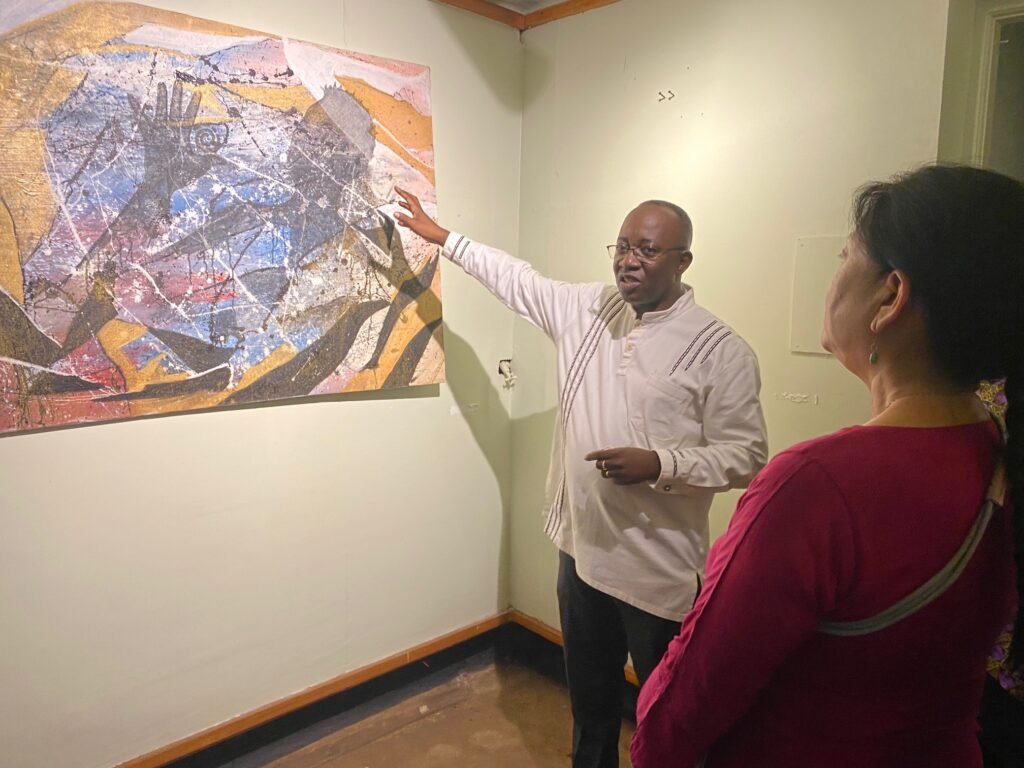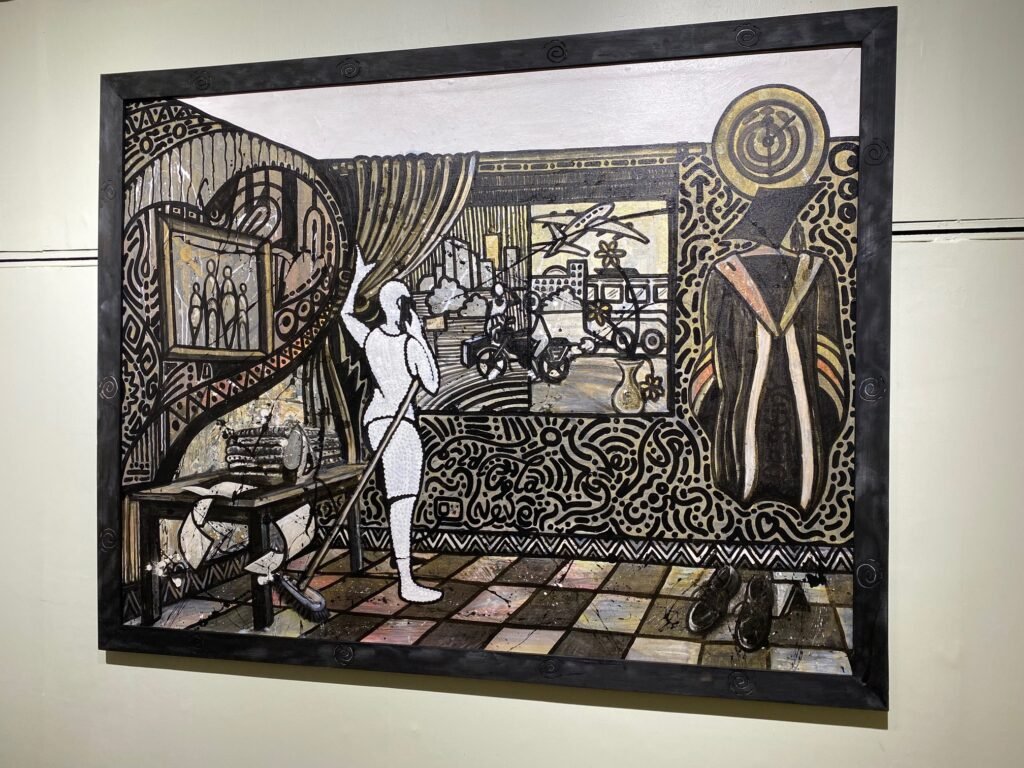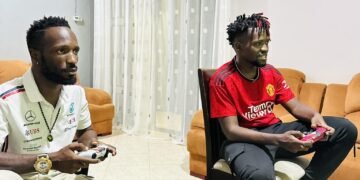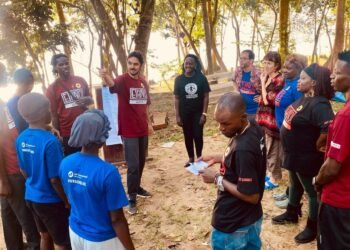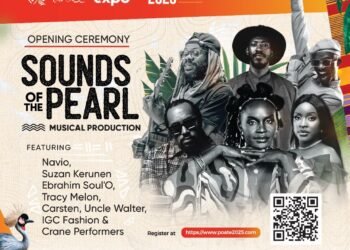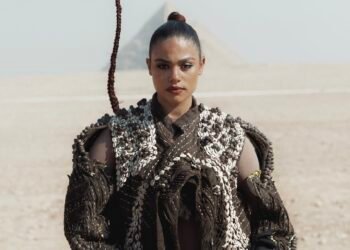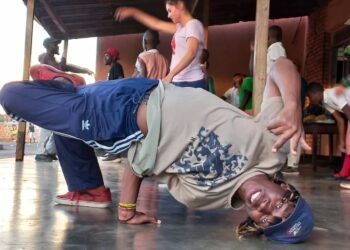In the serene walls of the Nommo Gallery in Kampala, a storm of emotion, memory, and advocacy is unfolding, not through words, but through the powerful brushstrokes of Bright Ntakky, alias Mr. Ntakky. The Mukiga-born visual artist has launched a deeply personal solo exhibition that speaks volumes on resilience, mental health, cancer, societal healing, and the enduring hope for a better Uganda.
Titled Ija Nkutebeze, and themed around Resilience, the exhibition is far more than a showcase of visual aesthetics; it’s a visual diary of survival, grief, and unrelenting hope.
During the opening of the exhibition, Mr. Ntakky explained that his work is inspired by the resilience people go through as individuals, centered on cancer and mental health.
From the onset, it is clear that Ntakky’s work is not only rooted in personal experience but also drawn from communal pain. Having lost loved ones and colleagues to the silent storms of mental health struggles and cancer, his art becomes a vessel, one that gives voice to the voiceless and brings light to the shadows often cast by societal neglect.
Rendered primarily in acrylics on canvas, Mr. Ntakky’s pieces lean into vintage tones, stark whites, profound blacks, rich undertones and overlays of gold — that carry both memory and mystery.
His storytelling doesn’t end with color or form; the narratives breathe through every canvas. One piece explores the idea of unmasking, challenging the notion that we must hide our pain or vulnerability to be accepted in society. “Maybe the mask is necessary, because if we got naked, maybe we’d be rejected.” Ntakky muses
His art calls into question the spaces we inhabit. Are they safe enough for people to be themselves, to grieve, to speak out, to heal? The works say both yes and not yet but they dream of a time when it will be.
The Artist as Advocate
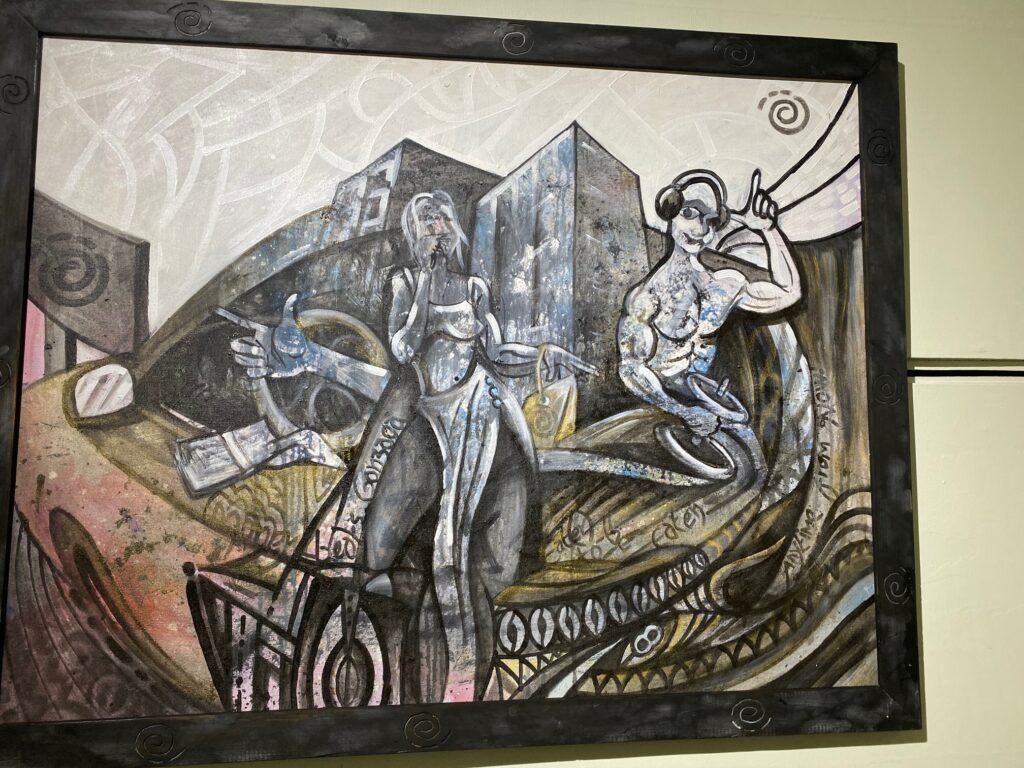
In a space where art often risks becoming purely decorative, Mr. Ntakky has redefined its purpose — advocacy. His art is a tool for healing, a mirror to society, and a clarion call to leaders and communities. “Let’s come together against cancer. Let’s rally against the things that boggle our minds,” he proclaimed. “Let’s save our country.”
It’s a sentiment shared by guests and fellow artists. Legendary multimedia artist Nuwa Wamala Nnyanzi praised the exhibition, saying, “It has communicated the artist’s thoughts and feelings, and it shows a concern for society. Art itself is therapeutic both for the creator and the viewer.”
In the West, doctors now prescribe museum visits as therapy. In Uganda, through Ntakky’s work, that practice has found a voice. One particularly moving piece, featuring a rose intertwined with the human heart, stirs initial admiration but closer analysis reveals messages of grief, loss, and fragile beauty.
Perhaps one of the most significant elements of this exhibition is its focus on children and youth. Over 100 children have been involved in the activities tied to the exhibition, not as passive observers, but as young creatives. “Children are naturally artists,” said Nnyanzi. “They draw before they can write. And involving them guarantees the future of art in Uganda.”
This vision was echoed by Philip Balimunsi, Curator of the Uganda National Cultural Centre. “This exhibition extends narratives to the community,” he explained. “It opens up space for public dialogue on delicate issues like mental health and cancer. And most importantly, it’s part of reclaiming our African stories, from our own mouths, with our own hands.”

According to Balimunsi, African art is on the rise globally, but the danger lies in foreign voices telling African stories. With artists like Mr. Ntakky taking center stage, Uganda is finding its authentic voice in the visual arts. “The exhibition isn’t perfect,” Balimunsi admitted, “but it’s exactly the kind of beginning we need.”
Ntakky’s work is a tapestry of his personal journey, but also a reflection of the everyday Ugandan experience; the struggles with wealth, love, dreams, poverty, mental breakdowns, and the constant search for meaning. One canvas may depict a skyline glittering with promise; another, a lone figure weighed down by invisible burdens.
In every piece, however, is a heartbeat, strong, persistent, sometimes broken, but never silent.
